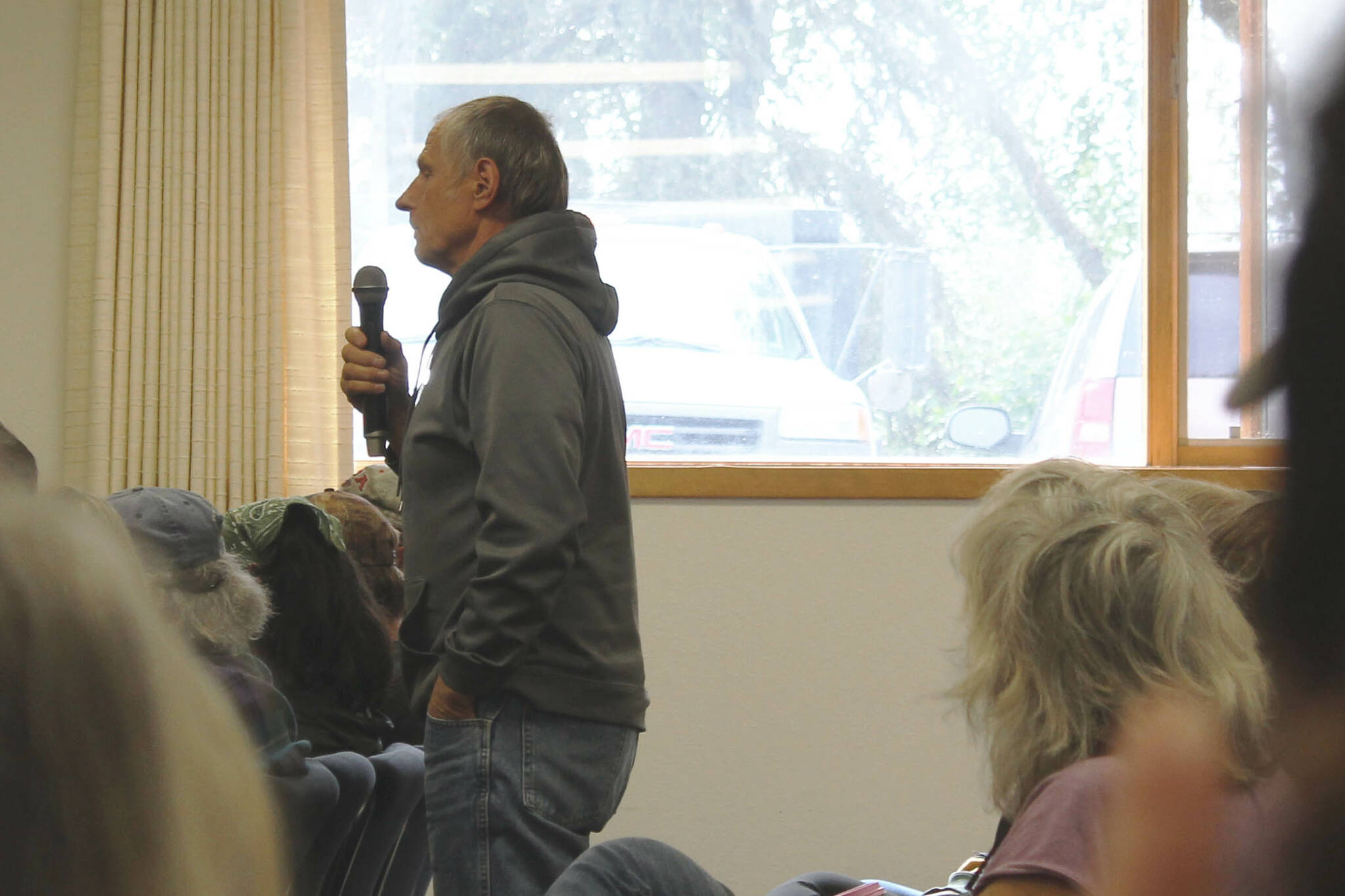Those concerned with the closure of Upper Cook Inlet’s east side setnet fishery should take their concerns about the fishery’s management plan to the Alaska Board of Fisheries. That’s what Alaska Department of Fish & Game Commissioner Doug Vincent-Lang told a packed room of setnetters during an event hosted by the Kenai Peninsula Fishermen’s Association.
Roughly 100 people filed into the Cook Inlet Aquaculture Association’s Kalifornsky Beach Road offices Tuesday, where Vincent-Lang appeared alongside representatives from Fish and Game to respond to concerns about the recent closure of Upper Cook Inlet’s east side setnet fishery.
For about two hours, Vincent-Lang fielded questions from the Kenai Peninsula Fishermen’s Association Board of Directors and from attendees about the closure of the fishery. Questions from setnetters were given priority.
The closure being discussed, announced by ADF&G’s Division of Commercial Fisheries on July 16, was triggered when the state closed the Kenai River drainage to king salmon fishing. Emergency Order 2S-18-22 closed the set gillnet fishing in the Kenai, Kasilof and East Forelands Sections of the Upper Subdistrict.
Attendees and setnetters said the closure unfairly punishes their businesses over a species they don’t target, while Vincent-Lang said he is obligated to follow the management plan decided by the Alaska Board of Fisheries, which calls for the closure during low Kenai River late-run king salmon numbers.
Also in attendance at Tuesday’s meeting were State Reps. Ron Gillham, R-Kenai, and Sarah Vance, R-Homer, as well as Soldotna City Council member Justin Ruffridge, assembly member Jesse Bjorkman, state Senate hopeful Tuckerman Babcock, and a representative from Gov. Mike Dunleavy’s office. Ruffridge and Bjorkman are also running this year for seats in the Alaska Legislature.
In response to multiple questions, Vincent-Lang stated that the fishery was closed in accordance with the Kenai River Late-Run King Management Plan, which he said was debated “at length” by the Alaska Board of Fisheries in April. Proposed changes to the way Upper Cook Inlet’s east side setnet fishery is managed, he said, need to be taken to that board.
“Until we can project to be above 15,000 in that fishery, we are going to continue to manage according to this management plan that the board has approved,” Vincent-Lang said. “ … I had a meeting with my staff this afternoon. There’s not a lot of confidence that we’re going to get above 15,000.”
The Kenai River Late-Run King Management Plan says that the Alaska Department of Fish and Game must close the commercial set gillnet fishery in the Upper Subdistrict if the projected late-run large king salmon escapement is less than 15,000 fish.
Multiple attendees urged the commissioner to use his emergency order authority to make inseason decisions about the fisheries. However, Vincent-Lang said in addition to the management plan, he’s been given “clear guidance” from the Alaska Board of Fisheries about how to manage the fishery.
All who spoke criticized the closure of the fishery, which many said punishes east side setnetters even though that fishery does not target king salmon. Others spoke to the negative financial impacts closing the east side setnet fishery has on the economy and to small businesses across the Kenai Peninsula.
“I really think that the overall picture is just what’s being said here, which is that one segment of the whole commercial fishing industry in Upper Cook Inlet is paying the price for a species that we’ve never targeted,” said one attendee. “There is only one group that targets kings. They aren’t paying the price.”
In all, there are more than 400 permit holders in Upper Cook Inlet’s East Side Setnet fishery. About 90% of those permit holders are Alaska residents and about 80% of Alaska permit holders live in the Kenai Peninsula Borough.
Brent Johnson, who is a former president of the Cook Inlet Aquaculture Association and currently serves as the president of the Kenai Peninsula Borough Assembly, suggested that the state put any money it receives through a federal fishery disaster declaration issued because of the 2022 closure into studying the Kenai River’s king salmon population, which determines the fate of the east side setnet season.
“We don’t know what goes on in freshwater,” Johnson said. “We don’t have a good handle on that.”
Moving forward, Vincent-Lang reiterated that solutions to the way the east side setnet fishery is currently managed will need to be taken up with the Alaska Board of Fisheries.
“Clearly, the avenue forward has to involve the Board of Fish,” Vincent-Lang said. “If you’re going to ask me to step outside plans for the next two years that I have clear guidance on, that’s not going to do it.”
Reach reporter Ashlyn O’Hara at ashlyn.ohara@peninsulaclarion.com.

